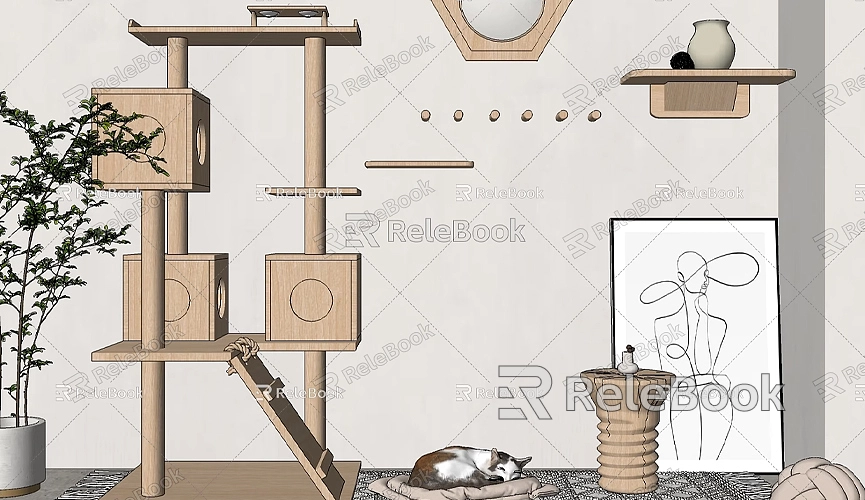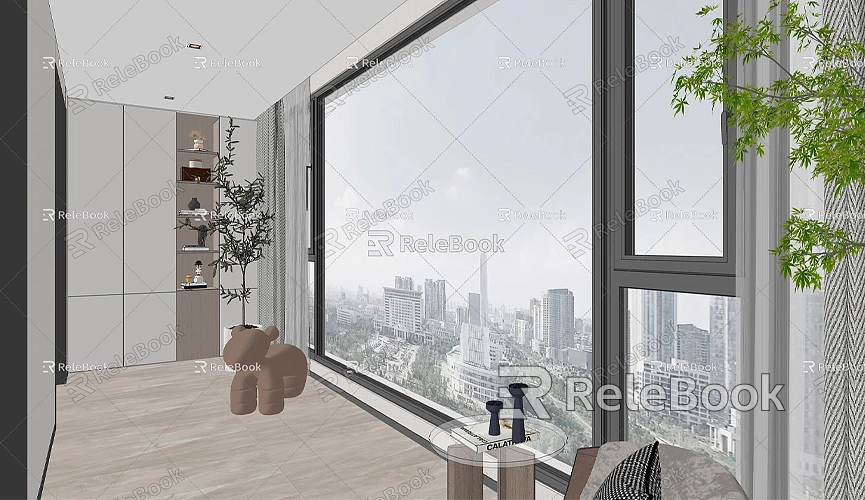How to import sketchup model in lumion
In the fields of architecture, landscape design, and interior design, SketchUp and Lumion are two widely used software programs for design and visualization. SketchUp is utilized for quick modeling, while Lumion is renowned for its powerful real-time rendering and animation capabilities. Many designers choose to import their SketchUp models into Lumion for rendering and presentation after completing their models. This article will explain in detail how to import a SketchUp model into Lumion, ensuring that the model's materials, lighting, and details are well-represented in Lumion.

Preparing the SketchUp Model
Before importing your SketchUp model into Lumion, it's essential to ensure that your model's structure is clear and that materials are applied correctly. These preparatory steps can reduce the time needed to adjust the model in Lumion.
- Optimize the Model: If your SketchUp model is very complex, Lumion may struggle to process it. Therefore, it's advisable to simplify unnecessary geometries, delete redundant faces, and hide lines to keep the model lightweight.
- Apply Materials: Reasonably distribute materials in SketchUp. While Lumion has a wide array of high-quality materials, assigning basic materials to each object in SketchUp can make it easier to replace and adjust materials after import.
Exporting the SketchUp Model
To import the model into Lumion, you need to ensure that the SketchUp file is saved in a compatible format. Lumion directly supports SketchUp's native file format (.SKP), so you can follow these steps to export your model:
1. Open your SketchUp model.
2. Ensure that all objects and materials you wish to export are included in the model.
3. Click on the "File" menu, select "Save As," and choose SketchUp's native format (.SKP) to open it directly in Lumion.
Importing the SketchUp Model into Lumion

Once your SketchUp model is prepared, you can import and render the model in Lumion. The process in Lumion is very intuitive, and here are the specific steps:
1. Open Lumion and create a new scene. You can choose from Lumion’s built-in scene templates or import your own scene.
2. In the Lumion interface, go to the "Import" tab and click "Import Model."
3. Locate the saved SketchUp (.SKP) file and import it. Lumion will automatically read the file and display it in the scene.
4. After import, you may need to adjust the model's position and scale to ensure it matches the background of the scene.
5. Once the import is complete, you can assign materials from Lumion’s library to the model or adjust lighting and environmental effects.
Adjusting Materials and Details
While you can bring in basic material information from SketchUp, it’s best to use Lumion's material library to reassign materials for enhanced rendering effects. Lumion features a vast collection of high-quality materials, such as stone, wood, and glass, which can make your model appear more realistic in the render.
- Replace Materials: Select a part of the model, open Lumion's material panel, and choose a suitable material to replace it. Each material in Lumion's library supports real-time adjustments for reflection, bump effects, and textures, helping you better control the visual outcome.
- Add Lighting and Environmental Effects: Lumion also supports adding lighting, shadows, and atmospheric effects, which can greatly enhance the model's presentation, especially when depicting night scenes or complex light and shadow effects.
Rendering and Output
After adjusting the model and replacing materials, you can use Lumion’s real-time rendering feature to view the final results. If everything looks as expected, you can start rendering images or animations.
- Image Rendering: Lumion can quickly generate high-resolution static renderings by simply setting up the viewpoint, lighting, and camera parameters.
- Animation Creation: In addition to static images, Lumion supports animation creation, helping you showcase the model’s walkthrough or scene changes, which is suitable for architectural presentations and project reports.
Tips
For better rendering results, it is advisable to simplify the polygon count in SketchUp before importing the model. If the model is overly complex, it can not only increase Lumion's computational load but may also lead to extended rendering times. You can manage the model structure in SketchUp using grouping and component features, making it easier to select and adjust different parts of the model in Lumion.
Additionally, Lumion supports a real-time link feature (LiveSync) with SketchUp, allowing for real-time synchronization of model modifications. This means that changes made in SketchUp will automatically update in Lumion, significantly improving workflow efficiency.
Importing a SketchUp model into Lumion is a simple yet effective way to elevate the visual impact of your design projects. By properly preparing the model, optimizing materials and details, and leveraging Lumion's powerful rendering capabilities, you can easily create impressive renderings and animations to better showcase your design proposals.
If you need high-quality 3D textures and HDRI while creating models and virtual scenes, you can download them for free from [Relebook](https://textures.relebook.com/). For stunning 3D models, you can also find a wealth of quality resources at [Relebook](https://3dmodels.relebook.com/), helping to enhance your design creations.

